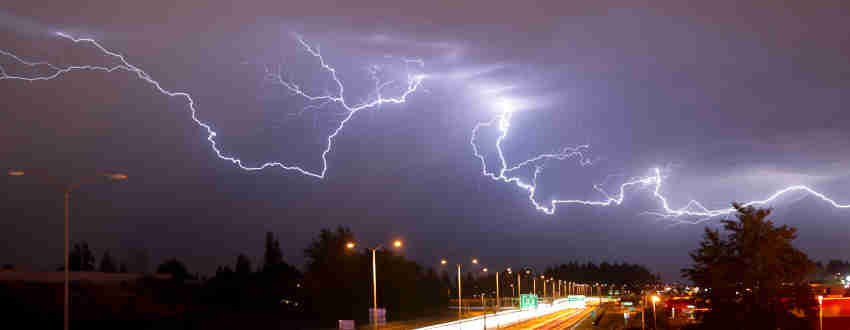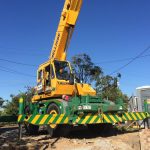
Operating Cranes In Inclement Weather & When To Postpone The Lift
Mobile cranes can be used to to complete heavy lifting jobs in a fraction of the time that it would normally take to complete, saving you time and money. However, operating any heavy machinery, such as a mobile crane, comes with safety risks for both the operator and nearby workers, so when it comes to a Mighty Cranes lift, safety is a top priority.
Operating a crane in inclement weather conditions can not only risk potential damage to the equipment, there is also the chance of serious, and even fatal, injuries to anyone working at an unsafe proximity to the equipment. That’s why Mighty Cranes’ crane operators are trained to monitor changing weather patterns and to know when it’s time to put down the tools and head to safety.
When it comes to operating a crane in poor weather conditions, if you’re not sure, don’t risk it. Below is our guide to how different weather conditions can affect crane operation,s and what you can do to reduce the risk of damage and injury.
Lightning
A lightning storm is arguably one of the most dangerous weather conditions to be operating a crane in. You don’t have to be a crane operator to know that lifting a large metal object into the sky (such as the boom of a crane) when there is lightning in the area is extremely dangerous.
Before The Lift
It’s important to check the forecast for the area the morning of the lift to reduce the risk of getting caught by surprise by inclement weather. If there is a high chance of lightning in the area, consider postponing the work for the day. It is also important to monitor changing weather conditions throughout the day rather than only relying on the forecast from the morning or night before.
During Crane Operation
As soon as you see lightning or if you can hear thunder, lower the crane boom as much as possible and turn off power to the crane. The crane operator and any nearby workers should then seek shelter at a far distance from the crane and any other metal equipment onsite.
After The Lightning Storm
Work should not continue immediately after a lightning storm. Before operating the crane again you will need to inspect all equipment for damage. Additionally, you will need to change the cranes rope after lightning has struck as the high temperatures can cause the crane’s rope to melt.
Wind
High winds during a crane lift can cause the load to swing, placing unnecessary load on the crane which could cause the load to drop or even result in tipping failure.
When it comes to operating a crane in high winds, the strength of the wind will likely increase the higher you go. This means that just because it may not feel very windy on the ground, it does not mean that there aren’t stronger wind speeds higher in the air where the lift will be completed. This is particularly true when performing a lift in an area with nearby obstructions, such as buildings, that will block the wind at ground level.
Additionally, the more surface area an object has, the greater the wind force on it will be. This means that although you may not feel strong winds standing on the ground, an object that is ten times the size of your body will have a much greater wind-force exerted against it.
Every mobile crane will come with a manufacturer’s recommendation for maximum wind speed during operation which should be strictly adhered to. However, it is also important to rely on your own common sense to assess any factors of the lift that could not be accounted for in the general recommendation given by the manufacturer.
If wind speeds are dangerously close to the wind rating supplied by the manufacturer, you should seriously consider postponing the lift. If the wind is picking up, pay close attention to how the wind is affecting the crane at any moment and err on the side of caution to avoid equipment and property damage, and even worker injuries or death.
Rain
Extra care must also be taken when operating a crane in the rain. Arguably the most dangerous part of operating a crane in rain or fog is the reduction in visibility. If it is raining hard enough to inhibit the visibility of the crane, or any barriers around the lifting area, operations should be immediately postponed.
Additionally, rain can make the construction site slippery so extra care should also been taking when entering and exiting the crane, as well as walking around the job site. When the ground becomes slippery from rain, traction may also be affected.
Finally, too much moisture can also cause damage to the crane itself as water could enter different parts of the crane such as the clutch and brakes. This means that once the rain has stopped, before operations can resume the crane should be inspected for any signs of damage.
Reliable Crane Hire Brisbane
If you’re looking for a Brisbane crane hire service you can rely on, come rain or shine, choose Mighty Cranes. We offer 24/7 crane hire services for all of your crane hire needs. Our highly trained crane operators are familiar with the manufacturer-supplied limits of our cranes and are trained in how to safely operate a crane in inclement weather conditions, including when to postpone a lift. For a reliable mobile crane lift where safety comes first call Mighty Cranes on 0477 000 976 today.







